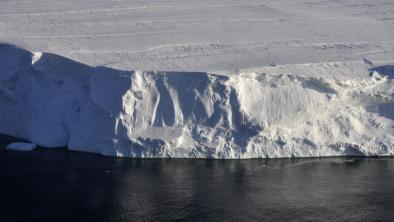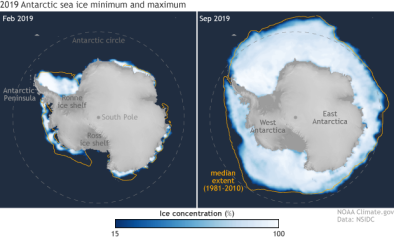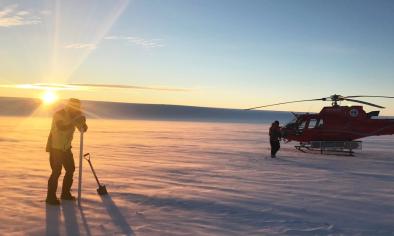Science Source
Potential Antarctic Ice Sheet retreat driven by hydrofracturing and ice cliff failure
We now have stronger evidence that sufficient West Antarctic retreat could lead to a higher calving front than any on Earth today, and higher than a stability limit suggested by recent papers. Putting that understanding into projections of the future, as in our new paper, has implications for the worst-case scenario. And, testing against the paleoclimatic record provides support for that understanding.
- Richard Alley, study co-author
- States that geological data indicate that global mean sea level has fluctuated on 103-106 year time scales during the last ∼25 million years, at times reaching 20 m or more above modern
- States that, if correct, this implies substantial variations in the size of the East Antarctic Ice Sheet (EAIS)
- States that, however, most climate and ice sheet models have not been able to simulate significant EAIS retreat from continental size, given that atmospheric CO2 levels were relatively low throughout this period
- Adds two never-before-accounted-for physical processes to a continental ice sheet model: hydrofracturing and cliff failure
- Runs the model forward in time, applying atmospheric and ocean temperatures typical of past warm periods
- Finds that incorporating these mechanisms accelerates the expected collapse of the West Antarctic Ice Sheet to decadal time scales, and also causes retreat into major East Antarctic subglacial basins, producing ∼17 m global sea-level rise within a few thousand years
Related Content
Headline

Jan 29, 2020 | BBC News
Journey to the 'doomsday glacier'
Headline

Nov 22, 2019 | NOAA Climate.gov
Understanding climate: Antarctic sea ice extent
Headline

Mar 26, 2019 | The Guardian
Australian researchers find huge lakes beneath largest east Antarctic glacier
Science Source
| Geophysical Research Letters
Mass Loss of Totten and Moscow University Glaciers, East Antarctica, Using Regionally Optimized GRACE Mascons
Yara Mohajerani, Isabella Velicogna, Eric Rignot


